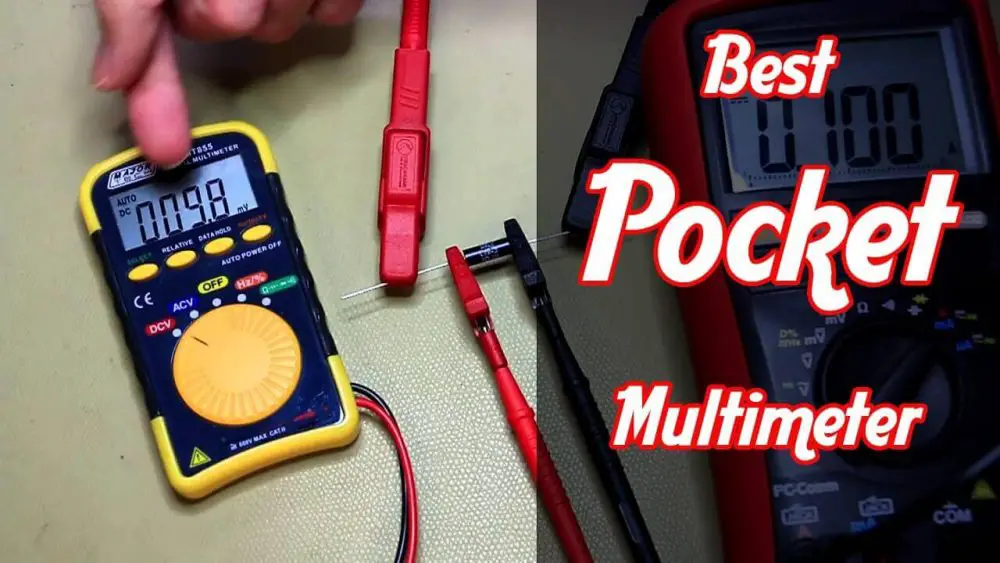How to test a car fuse with a multimeter
Cars and older homes that do not use smart circuit breakers use fuses to prevent loss from electrical surges. Sometimes these fuses need testing to check that they are still in a good working position. We are using a multimeter to test a fuse, and it is a fast and easy way to learn.
Precautions:
- Never replace a blown or unlikely fuse with one of a higher rating. The rating guarantees that the current can pass through the wiring safely. Always replace a fuse with the same rating as (or a lower rating than) the old one.
- Do not test a fuse on equipment that is still on.
Table of Contents
What is a Fuse
A fuse is simply a wire generally surrounded by some plastic that completes a circuit when plugged in. Most fuses have two prongs with a small wire running between them. A fuse consists of breaking through if something goes wrong. When the fuse breaks or blows, it will protect the more expensive part from getting damaged.
A fuse blows when too much power runs through it. This extra power causes the metal wire to burn up, breaking the circuit. When the circuit breaks, the extra power cannot get to the central part that can not handle the extra power. In cars, there are fuses typically in two spots. You may find a fuse box under the hood with all kinds of fuses in it, and there are fuses under the dash on the passenger side.
Types of Fuses
Some fuses are different colours, and each colour indicates how much power it can handle. The more oversized fuses are usually a dark grey, though and not a colour.
On the mini fuses, you can generally see through the coloured plastic, which allows you to see if it is blown or not without testing it. Also, blown fuses may have discolouration, which is a sign that it is bad and time to change it. Though you can not see the wire, the oversized fuses will have to be tested if you think something is wrong with them. Read on to learn how to do this.
How do we know the fuse blows?
There are a few ways to check if a car fuse is not working quickly. First, it is necessary to find the fuse that controls whatever device is not working. There may be a diagram inside the fuse box lid or the vehicle’s manual, or you can find it online. Then, remove the fuse using fuse pullers – make sure the car’s ignition is off before you do this! Next, inspect the fuse for visual signs of discolouration or broken filaments. You can then install a replacement car fuse.
How to test a Car Fuse with a Multimeter
- Once you get the fuse pulled, you can visually inspect it. For example, if it is clear plastic, you can see if the connection seems broken.
- If you can’t see the wire through, then it is time to get the multimeter out. To use the multimeter, you first have to turn it on and get the probes out.
- Next, you can set the multimeter to ohms.
- You can measure the resistance of the fuse with Ohm settings.
- You can then touch the probes together; this gives you a baseline reading and will tell you roughly the number you will get once you put the probes on the fuse. Once you have an idea of the reading, you should expect to connect the probes to the fuse.
- You have to touch one probe to one prong and the other to the other prong. It will give you a reading.
- If the reading is close to when the two probes touched, then the fuse is fine. However, if it does not provide a reading, then that means the fuse is blown.
- This is because the current it is trying to send through the fuse is not making it back.
- To ensure the fuse is blown, you can change the multimeter set to measure the current, the arrow with a line.
- You can then touch the probes to the prongs on the fuse in the same way.
- If it beeps continuously, the fuse is fine, but it is blown if it does not emit a sound.
- Either test is an acceptable way to see if a fuse is blown, then replace it.
How to Replace a Car Fuse
- If the fuse is blown, then it is pretty simple to replace it.
- You just have to buy another fuse that is the same and plug it in.
- However, if the fuse is not blown, you will have to dig deeper into your electrical problems, which can be frustrating.
- That is why it is good to start with testing the fuse first because, for most people, it will only take a couple of minutes to test the fuse.
- Another thing to remember if it isn’t the first fuse that you test is to look at the diagram closely and test all the fuses that go to a particular system.
- Sometimes a system may have more than one fuse, so you need to make sure you test them all with the multimeter to rule out one being blown.
What are the possible causes of the car fuse blowing?
- The fuse plays an essential role in protecting the circuit from more significant current than it can handle.
- Thus, blowing a fuse is a sign of a short somewhere between the ground and power wire or two wires.
- Some of the most common causes of fuse blowing are;
- The wire harness going into the liftgate or trunk lid breaks in at the position it’s meant to bend, subsequently shorting and popping the fuse connected to the brake lights or taillights.
- You installed the wrong bulb either in the tail lights or headlights by mistake.
- A shortened accessory such as a cigarette lighter socket is connected into the power socket front’s addition, or a metal object such as a coin falls inside.
- A wiring harness linked to a component found in the engine bag rubs through and subsequently blows a fuse.
Frequently Asked Questions
Using a test light or multimeter, you can find blowing flat-bladed type fuses without removing them. These fuses have two contacts on top of them. Test light method: Turn the ignition on (to energize more circuits).
Usually, blowing a fuse causes a minor car electrical problem. For example, backlights or interior lights are not working, not using your radio, losing a turn signal, or some of your climate control features not functioning correctly. In rare cases, your car would not start if the fuse is blown.
Conclusion
To understand how to test car fuses with a multimeter, reading through this article has provided you with some valuable insight into the steps you need to take. Consequently, you will be in a better position to identify whether it is car fuses that are destroyed or another electrical component.
Furthermore, you also have an idea of some of the most common reasons why a fuse blows. Therefore, you are in a much better position to take precautionary measures to ensure you do not expose the vehicle fuses to a higher possibility of getting damaged.




